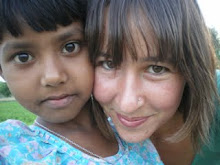Traditionally, an ashram (Sanskrit/Hindi:(आश्रम)) is a religious hermitage. Additionally, today the term ashram often denotes a locus of Indian cultural activity such as yoga, music study or religious instruction.
An ashram would typically, but not always, be located far from human habitation, in forests or mountainous regions, amidst refreshing natural surroundings conducive to spiritual instruction and meditation. The residents of an ashram regularly performed spiritual and physical exercises, such as the various forms of Yoga. Other sacrifices and penances, such as Yajnas were also performed. Many ashrams also served as Gurukuls or residential schools for children.
Ashrams have been a powerful symbol throughout Hindu history and theology. Most Hindu kings, until the medieval ages, are known to have had a sage who would advise the royal family in spiritual matters, or in times of crisis, who was called the rajguru, which literally translates to royal teacher. A world-weary emperor going to this guru's ashram, and finding solace and tranquility, is a recurring motif in many folktales and legends of ancient India.
Sometimes, the goal of a pilgrimage to the ashram was not tranquility, but instruction in some art, especially warfare. In the Hindu epic Ramayana, the protagonist princes of ancient Ayodhya, Rama and Lakshmana, go to the Rishi Vishvamitra's ashram to protect his Yajnas from being defiled by emissary-demons of Ravana. After they prove their mettle, the princes receive martial instruction from the sage, especially in the use of enchanted weapons, called Divyastras. In the Mahabharata, Lord Krishna, in his youth, goes to the ashram of Sage Sandiipanii, to gain knowledge of both intellectual and spiritual matters.


























